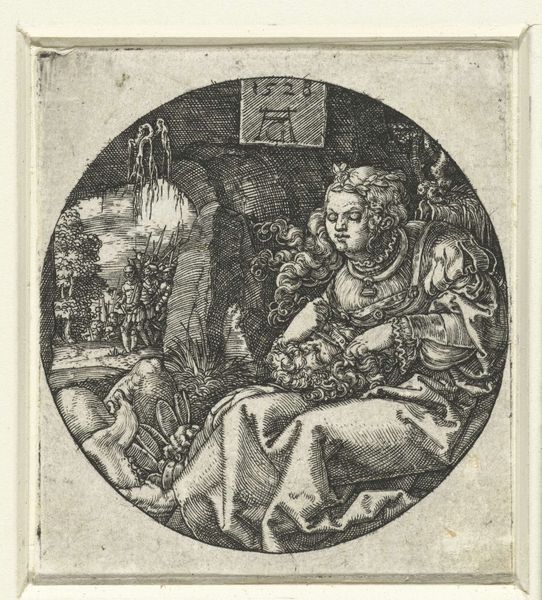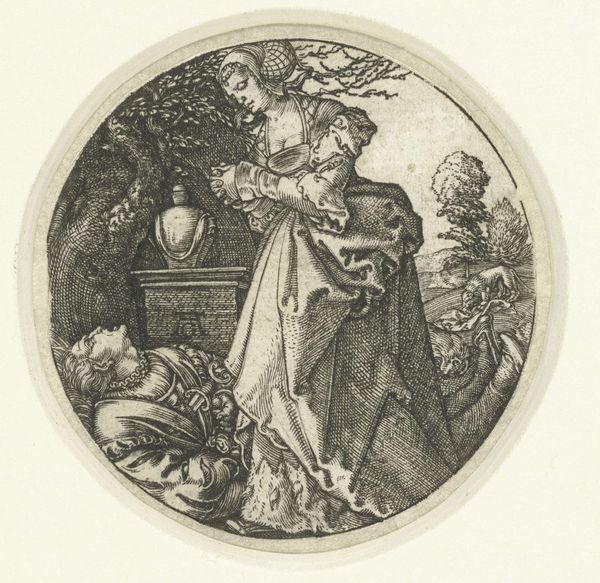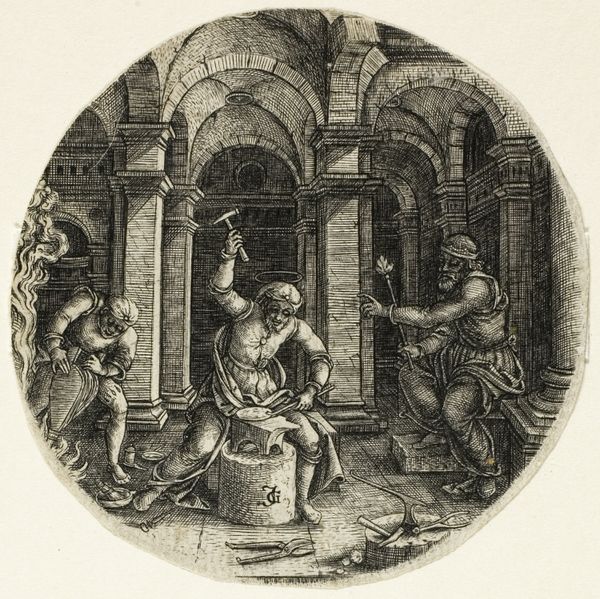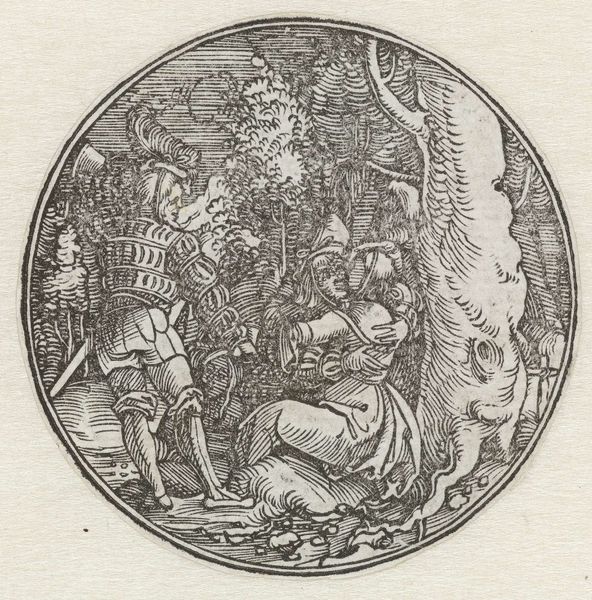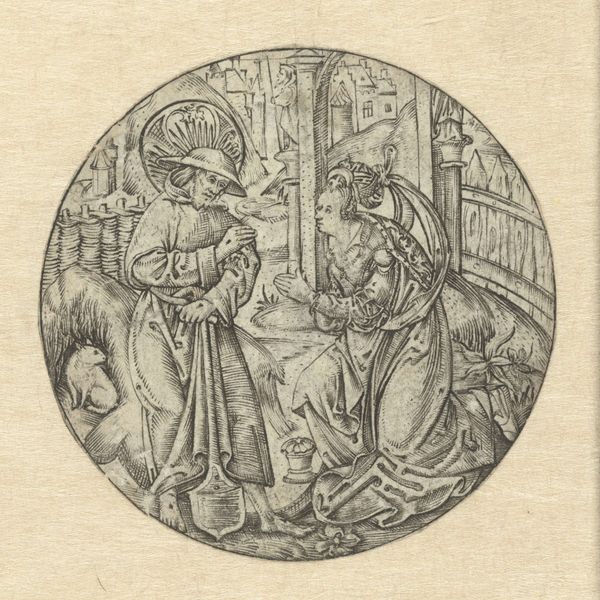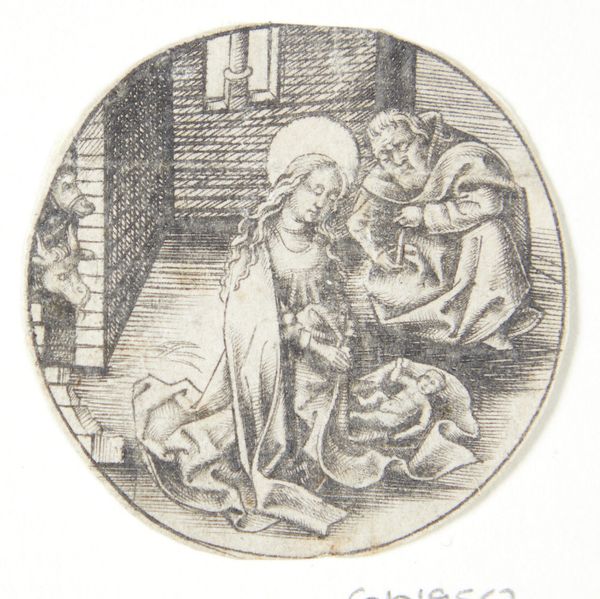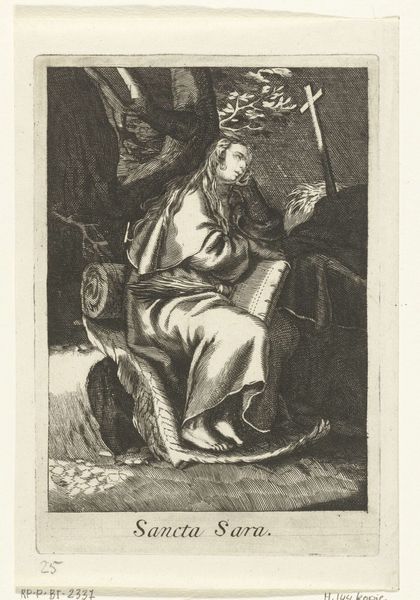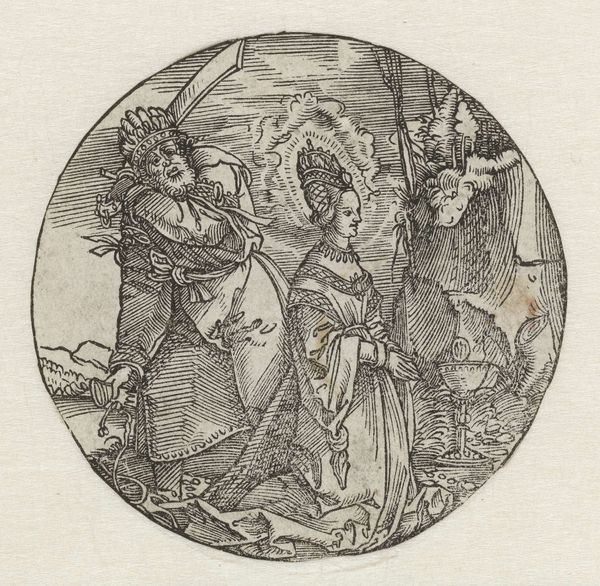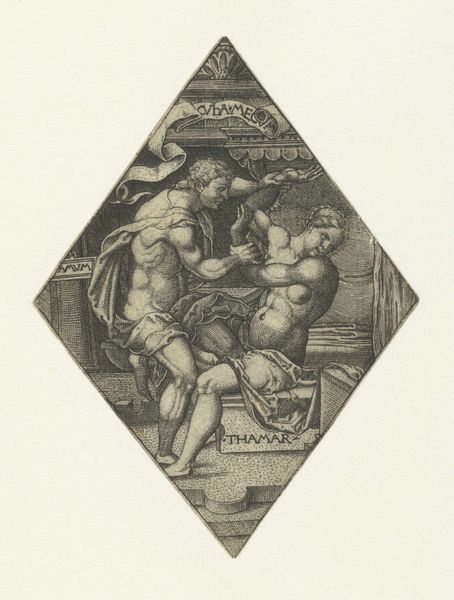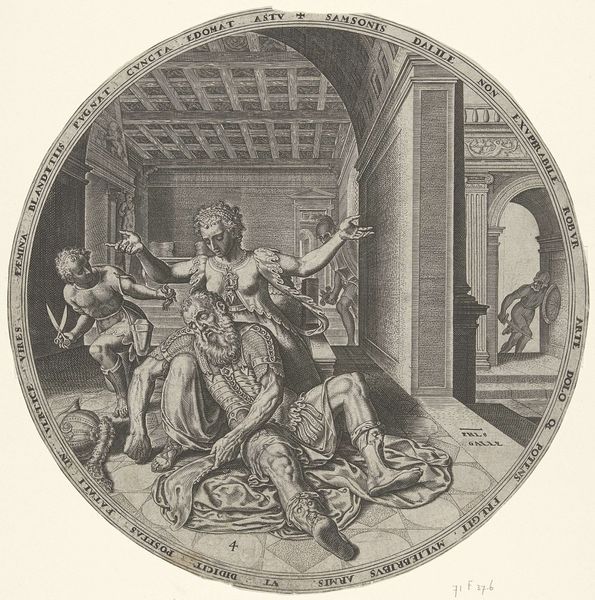
print, engraving
#
narrative-art
# print
#
old engraving style
#
figuration
#
history-painting
#
northern-renaissance
#
engraving
Copyright: Rijks Museum: Open Domain
Editor: Here we have Heinrich Aldegrever's "Simson en Delila" from 1528, currently at the Rijksmuseum. It's an engraving. I’m immediately struck by the circular composition, it’s quite unusual. What is your take on this piece? Curator: The visual power lies in how Aldegrever distills a complex narrative into a single, potent image. This isn't just a depiction; it's an icon of betrayal. Do you notice how Delilah's gaze is averted, almost as if she is disassociating from the act of cutting Samson's hair? The shorn hair itself… it's not just hair, it's a symbol of lost virility and strength. Editor: That's a great point, I see what you mean! So, what does this act symbolize within the historical and cultural context of the Northern Renaissance? Curator: Think about the anxieties of the time - shifting religious landscapes, societal upheavals. Samson, as a figure of strength undone by a woman, resonated deeply with the fears surrounding female agency and the potential for moral corruption. The very act of shaving, loaded with ritual significance, carries an overtone of emasculation. In essence, it's the ultimate power reversal. Editor: That’s such an insightful point. I’ve never considered how cultural fears are woven into seemingly simple imagery. Curator: Exactly. The cultural memory encoded within such images remains potent. This isn't just art; it's a time capsule of collective anxieties and cultural attitudes. Editor: I’m beginning to appreciate how the story itself is secondary to the lasting symbolic impact and how the image itself acts as a container for something beyond the surface level. Thank you.
Comments
No comments
Be the first to comment and join the conversation on the ultimate creative platform.
